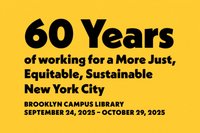
BACKGROUND
In Fall 2025, Pratt Center partnered with Pratt Libraries on an exhibition that celebrated six decades of fighting for housing, climate, and economic justice in New York City.
From hand-drawn maps and typewritten reports to today’s digital storytelling and data-driven tools, the exhibition aimed to share how community-driven research and engagement at Pratt Center has evolved, yet remains grounded in community knowledge and participation.

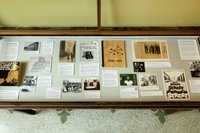
1963-1968: Beginnings
Founded in 1963 with a grant from the Rockefeller’s Brothers Fund, Pratt Center is the nation’s oldest university-based advocacy planning organization.
The Center’s first major project was to assist Church Community Services—a coalition of Bedford-Stuyvesant clergy—and the Central Brooklyn Coordinating Council (CBCC) in evaluating the impact of a looming urban renewal plan.
What followed was a true collaboration: the Center, led by then-Field Director Ron Shiffman, worked with the CBCC on planning strategies that emphasized rehabilitation and preservation, in contrast to the slum clearance plans backed by the city.
This effort ultimately drew the attention of Senator Robert F. Kennedy whose staff worked with Pratt and CBCC to help form the Bedford Stuyvesant Restoration Corporation, which would inspire the birth of community development corporations across the country.
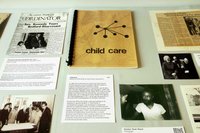
1973-1980: Building Capacity
The birth and success of the community development corporation model gave the Pratt Center a platform to begin advocating on policy issues – taking a leading role in successes including the expansion of the Model Cities program and the design and financing of more than 150 day care centers through the new NYC Agency for Child Development.
In 1968, Ron Shiffman became director, and to reflect growing engagement with work promoting clean air and water, recycling, and sustainability, the organization was renamed Pratt Institute Center for Community and Environmental Development, or PICCED.
The flight of population and investment from New York City that peaked in the early 1970s proved to be a real crisis and required PICCED to seek innovative responses. One of the most urgent was to make sure the funding was there for community groups to do everything from rebuild abandoned housing to create employment and training opportunities.
In 1973, Congress passed the Comprehensive Employment and Training Act, or CETA, whose funds PICCED would use to hire architects. By 1975, PICCED and Pratt Institute would establish the Pratt Architectural Collaborative, enlisting the support of architectural faculty to work on housing rehabilitation efforts and engage volunteers to assist community organizations working to rehabilitate apartment buildings abandoned by landlords.
“Sweat equity” groups working with PICCED came to include Banana Kelly Community Improvement Association and People’s Development Corporation in the Bronx, Adopt-a-Building on the Lower East Side, and Renigades and Youth in Action, both in East Harlem. To make sure those sweat equity groups had funding, PICCED brought them together with state legislators to develop a program supporting building rehab.
The result was the Neighborhood Preservation Companies Act, providing up to $100,000 annually for a community development group’s administrative costs.
With funds from the Astor Foundation, Rockefeller Brothers Fund, Norman Foundation, and Ford Foundation, Pratt Center began work to promote economic development in low-income neighborhoods.

1981-1992: New Strategies
The Reagan Revolution presented intense new challenges for New York. As federal agencies slashed budgets, PICCED had to identify new strategies for financing its community development and housing work.
The organization began by assessing the impacts of Reagan’s planned switch from direct subsidies of affordable housing to new Section 8 vouchers, while also advocating for new local financing opportunities.
Born out of this work were two new strategies: inclusionary zoning and an affordable housing trust fund. A 1983 conference would draw more than 250 attendees to explore these new solutions (see right).
By 1985, this research and advocacy helped prompt the Cuomo administration and state legislature to create the NYS affordable housing trust fund.
Its dual role in making policy and supporting community work made the organization increasingly visible in the public eye. In 1983, Architectural Record called PICCED, “possibly the most influential community design center in the country,” citing projects including a planned study emphasizing housing stabilization and revitalization for East Flatbush; a design and funding strategy for rowhouses in Longwood; design studies for a youth center in Chelsea; and design and restoration work for historic homes of Weeksville.
Meanwhile, PICCED honed in and its role as a training center, working with the Developing Training Institute to offer a real estate development curriculum for urbanists in community organizations and also launching the Pratt Community Economic Development Internship, which provided staff from NY-based organizations to develop projects under the tutelage of Pratt.
Building on the strength of these educational programs, PICCED expanded its architectural and technical assistance practice through the late 1980s. From projects in East New York supporting the transformation of dozens of City-owned buildings into mutual housing co-ops, to the Lower East Side where architectural and financial assistance helped create hundreds of units of affordable housing.
During this time, PICCED also deepened its work in the Bronx, supporting residents who fought displacement and working on collaborative planning efforts that connected housing, economic development, and cultural life across the borough.
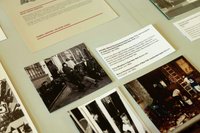
1993-2002: Sustaining Innovation
During the 1990s, PICCED and its work benefited from its evolving network. In 1990, Mayor Dinkins appointed Ron Shiffman to the City Planning Commission for a six-year term. With funds from the Board of Education, PICCED began creating small “New Visions” schools as alternatives to massive high schools. It also co-sponsored the Benjamin Banneker Academy for Community Development in Crown Heights, and subsequently helped El Puente, ACORN, and Cypress Hills Community Development Corporation secure and rehabilitate school sites.
Later, PICCED worked with Northwest Bronx Community and Clergy Coalition on plans to reenvision Kingsbridge Armory. HUD’s initiative connecting universities and communities gave PICCED the chance to engage East New York and Red Hook residents in comprehensive planning, which later extended to 197-a plans in Greenpoint/Williamsburg, Red Hook, and Bedford-Stuyvesant.
The Pratt Planning and Architectural Collaborative would continue to transform neglected spaces into community resources—from a Bronx bagel factory reborn as The Point CDC’s arts center, to East New York Farms!, an agricultural project and farmers market. By the mid-90s, PICCED became a key resource to the city’s budding environmental justice movements, using GIS to map solid waste facilities, expose discriminatory patterns of siting, and laying the groundwork for the reform of garbage disposal.
Growing out of the work with the South Bronx community, PICCED also began co-developing a proposal for replacing the Sheridan Expressway with a riverside park and creating a Bronx River greenway. At the Rockefeller estate at Pocantico, PICCED convened a statewide summit that seeded the beginning of New York’s brownfields-cleanup law.
By the late 1990s, PICCED also began work to preserve New York’s dwindling manufacturing base. A 1997 conference co-sponsored by PICCED laid the foundation for what would become the New York Industrial Retention Network, later instrumental in establishing the Mayor’s Office of Industrial and Manufacturing Businesses and Pratt Center’s Made in NYC.
Later, in the aftermath of 9/11, PICCED convened planners and citizens to develop a civic vision for lower Manhattan to make sure development flowed from public needs, not opportunism. With the Civic Alliance to Rebuild New York, PICCED helped organize “Listening to the City” a public event at which 2,000 New Yorkers discussed and weighed in on plans for lower Manhattan.
With a grant from the German Marshall Fund, Pratt organized teams of New Yorkers involved in post-9/11 rebuilding to visit Berlin, Italy, and other countries to learn from European models of urban planning.

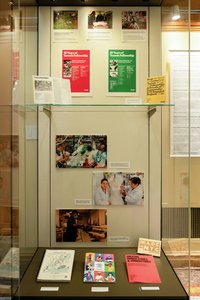

Taconic Fellowship (2013-now)
The Taconic Fellowship is a Pratt Center grant program for Pratt faculty, staff, and students. Since 2013, Pratt Center has awarded five to ten projects each school year with up to $12,000 in funding for work that advances racial, climate, and economic justice in New York City. The fellowship leverages Pratt’s academic resources for projects that engage faculty and students with community partners to address local needs. Read our full report of a decade of the Taconic Fellowship in our report, A Decade of Community-Engaged Projects.
Made in NYC (2003-now)
Made in NYC is a Pratt Center program that supports local manufacturers and makers in New York City. Launched in 2003, it has grown into a community of over 1,900 businesses. Membership is free and provides small businesses with skills-building, marketing platforms, and other resources. Nearly 70% of new members since 2018 identify as BIPOC- and/or women-owned businesses.
Made in NYC works towards a more equitable and sustainable manufacturing sector that creates quality jobs, supports BIPOC entrepreneurs and workers, fosters creativity, and nurtures a thriving ecosystem of goods made and consumed locally. The initiative builds on Pratt Center’s long history of small business advocacy and manufacturing and industrial policy. Follow Made in NYC on Instagram at @madeinnewyorkcity.
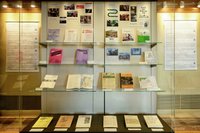
Basement Apartments Safe for Everyone (2008-now)
In 2008, Pratt Center and Chhaya CDC co-published New York’s Housing Underground, a landmark study highlighting unregulated basement apartments as a critical part of the city’s affordable housing stock, home to tens of thousands of New Yorkers in mostly low-income communities, but without basic tenant protections and safety regulations. This led us to join Chhaya CDC in forming the Basement Apartments Safe for Everyone (BASE) coalition to advocate for safe and affordable legalization of basement and cellar apartments.
The coalition grew to include Cypress Hills Local Development Corporation (CHLDC) which helped lead the successful advocacy for a basement conversion pilot in East New York. Joined by newer members including Center for NYC Neighborhoods and Citizens Housing and Planning Council, BASE advocated to maintain pilot funding and expand regulatory reform.
With climate change increasing flood risks, as tragically shown by Hurricane Ida in 2021, Pratt Center joined BASE in a renewed campaign for a citywide basement legalization program, which culminated in the passage of key state and city legislation in 2024 that will, finally, create a basement legalization program. Today, we work with BASE to sure the new program will reach as many tenants and homeowners as possible.
Fighting Speculation, Growing CLTs (2023-now)
Two recent reports examine housing and land use in New York City from different angles: Flipping Out analyzes how professional investors are buying and flipping small homes, driving up costs and primarily affecting low-income communities of color, while Gaining Ground documents the growth of Community Land Trusts (CLTs) as a strategy for collective ownership and permanent affordability, offering a roadmap for expanding CLTs to address displacement and speculation citywide.
The Case for Inclusionary Zoning (1983-2016)
In 1983, Pratt Center released Inclusionary Zoning and Housing Trust Fund, advocating for a new policy to require low-income family units in new high-rise development in Manhattan. They did not win a mandate on inclusionary zoning then—the Koch Administration instead creating the (voluntary) “R10 Program,” which produced less than 2,000 affordable units in Manhattan.
In 2004, Pratt Center returned to the issue in Increasing Housing Opportunity in New York City: The Case for Inclusionary Zoning with PolicyLink, demonstrating the need for affordability mandates rather than incentives. Citing successful policy in other cities, the report showed how much affordable housing a mandatory program could create, using the then-proposed Greenpoint-Williamsburg rezoning as a case study. Released in the early years of the Bloomberg administration and its 120 rezonings that reshaped the city, the report served as an early warning for stronger affordability protections.
More than a decade later, Mandatory Inclusionary Housing (MIH) was finally introduced under de Blasio, but was paired with rezonings mostly in low- and moderate-income neighborhoods of color with high risks of displacement. Pratt Center and its partners collaborated with community-based organizations on alternative community plans, like the Bronx Coalition for Community Vision plan and Bridging Gowanus, that prioritized deep affordability and addressed community needs. Pratt Center also advocated for stronger forms of value capture in Our Hidden Treasure (2020).
EnergyFit (2009-now)
EnergyFit Affordable Small Homes is Pratt Center’s ongoing energy equity research initiative—built over a decade of research and advocacy to ensure NYC’s low-income residents in 1–4 family homes benefit from the clean energy transition.
This demonstration project integrates home repair, energy efficiency retrofits, and electrification measures—traditionally installed separately—into one holistic, community-informed model. By combining research-informed program design with local expertise, EnergyFit shows how better-designed policies and programs can expand access to clean energy in underserved communities.
Post-Sandy Resiliency Planning (2012-2014)
Hurricane Sandy exposed not only the urgent need for resiliency planning, but the disparate impact of climate change on low-and moderate-income communities on the waterfront. After Hurricane Sandy in 2012, Pratt Center partnered with Pratt Professor Deborah Gans and community groups in Sheepshead Bay on immediate recovery support and led a two-year resiliency visioning process.
Pratt Center offered technical assistance to help homeowners elevate and reconstruct homes above flood levels using sustainable materials and innovative designs. Storm impact was also documented through detailed mapping to inform equitable recovery planning. The Sandy Design Help Desk also launched to provide free expert design and regulatory guidance to over 200 families navigating complex recovery programs.
Beyond Brownfields (1998-2020) (Center left)
In the 1990s and 2000s, Pratt Center played a leading role in addressing brownfields, or contaminated former industrial sites. Partnering with the Rockefeller Brothers Fund, Pratt Center convened the Pocantico Roundtable, a series of meetings bringing together diverse groups to find common ground on brownfield cleanup and redevelopment.
The consensus built at Pocantico influenced key legislation, including New York State’s 2003 Brownfield Reform Act which established innovative cleanup and community engagement programs. After helping to shape the legislation, Pratt Center worked with many groups across NYC, including Cypress Hills Local Development Corporation (CHLDC) to envision the future of vacant sites through the Brownfield Opportunity Area program—one of the key NYS programs that was part of the legislation that emerged from Pocantico.
Together with CHLDC, Pratt Center facilitated a community process to rethink brownfields as sites for affordable housing, food system improvements, and manufacturing. One community engagement action was the Verde Summit for which Pratt Center facilitated community workshops. CHLDC ultimately brought these community visions to fruition when it developed Chestnut Commons, a mixed-use building with deeply affordable housing, retail, and a community center.

Community Planning in Action: Gowanus (mid-2000s-2015)
For almost a decade, Pratt Center, along with partners from the Gowanus Neighborhood Coalition for Justice (coordinated by Fifth Avenue Committee), developed and facilitated the Bridging Gowanus community planning process convened by local elected officials including Brad Lander, then-council member and former Pratt Center Executive Director, representing the neighborhood. Together, the coalition organized the community to develop the outlines of a comprehensive, community-based infrastructure and land use plan for a future Gowanus.
Transforming Transportation for Equity and Access (Early 2000s-now)
Pratt Center’s transportation projects include advocacy around the Sheridan Expressway in the Bronx, leading the citywide launch of Bus Rapid Transit routes through advocacy and mapping transit disparities, and conducting participatory research with Riders Alliance on Flatbush Avenue to highlight how slow, unreliable buses affect riders’ health and economic opportunities.
Making Willets Point Work for New York (2009)
As the NYC Economic Development Corporation moved to redevelop Willets Point in 2008, an industrial area nestled between Corona and Flushing north of Flushing Meadows Park, Pratt Center facilitated a series of workshops to identify and prioritize the concerns of area residents, business owners, and workers. This resulted in our report, “Making Willets Point Work for New York: A Plan for Neighborhood Success,” evaluating the plan and putting forth new recommendations based on community input.
One City/One Future (2009)
One City/One Future was the product of a collaboration between the Pratt Center, the National Employment Law Project, New York Jobs with Justice, and dozens of other groups. Together, the coalition looked towards international cities for new ideas in planning that would spur a more affordable and sustainable future for New York.
Community Voices and the Future of the Seward Park Urban Renewal Area (2009)
In 2008 several non-profits renewed a community conversation about how the vacant city-owned Seward Park Urban Renewal Area (SPURA) site in Lower Manhattan could be developed to benefit the surrounding neighborhood. Pratt Center assisted local stakeholders, including GOLES (Good Old Lower East Side), in creating participatory exercises and conducting visioning sessions for the future of the site, resulting the report “Community Voices and the Future of the Seward Park Urban Renewal Area.”
Making the Most out of Racial Equity Reports (2025)
In 2021, the Racial Impact Study Coalition and other community groups led the push for historic legislation to curb displacement from new development across New York City. Our 2025 report explores how the legislation and the resulting data tools are currently being used and how they can be improved.